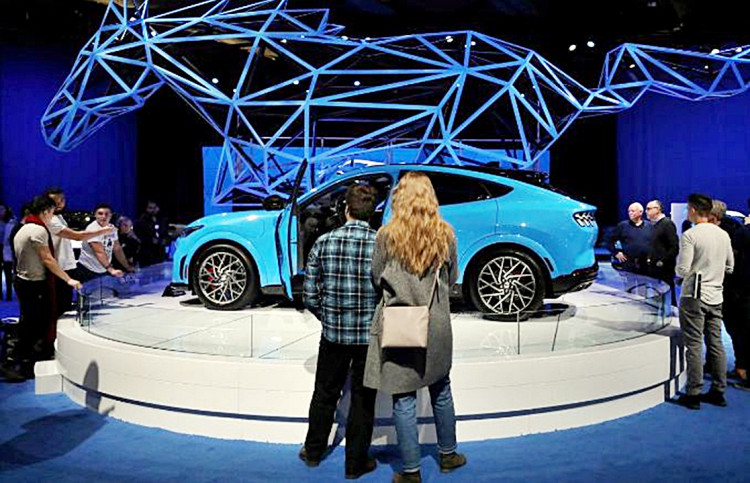The powerful V8 gasoline engines on four of the beasts in the 2020 Ford Mustang lineup produce that unique rumbling roar so beloved by devotees of these iconic American muscle cars.
A 5.0 liter Ti-VCT V8 engine drives the 2020 Ford Mustang GT and the 2020 Ford Mustang Bullitt. The 2020 Ford Mustang Shelby GT350 and the 2020 Ford Mustang Shelby GT500 pack a 5.2 liter Ti-VCT V8 engine under the hood.
The exception to this rule is the 2020 Ford Mustang EcoBoost, which sports a turbocharged 2.3 liter EcoBoost I-4 gasoline engine. The criticism of this quiet and muted Mustang became so loud that Ford was forced to amplify the existing engine sound and broadcast it on the car's speaker system.
Now, Ford has gone and done the same thing, and then some, for its upcoming first all-electric Mustang – the 2021 Mustang Mach-E SUV.
The Mustang Mach-E gets to showrooms later this year and into the hands of customers by early 2021. Thanks to some audio magic by Ford engineers, owners of this machine will hear the sound of an engine revving when they hit the accelerator pedal.
"It's one of those things where we're trying to give people the Mustang experience," said Leeway Ho, vehicle engineering supervisor of the Mustang Mach-E. "It's not just the power, it's the sound that comes with it. Without the sound, you're just a regular EV car."
Ho revealed that the engine sound is electronically generated but is based on vehicle torque. He said the Mustang-E's computer looks at the incoming torque, power signals and speed and does the math to to generate a loudness in sync with the torque.
He said drivers will be able to turn-off the engine sounds using the EV's 15.5-inch center control screen. Ho calls the Mach-E's sound "audio wizardry."
Ford isn't doing this only to meet customer wishes, however. The National Highway Traffic Safety Administration (NHTSA) now requires that all EVs broadcast some sort of sound in low-speed situations, which the Mustang Mach-E can do.
Back in 2019, NHTSA requested public comment on amending the new Quiet Vehicle safety standard FMVSS No. 141, Minimum Sound Requirements for Hybrid and Electric Vehicles. The amendment sought to allow multiple driver-selectable sounds that met existing performance requirements,
The muted sounds EVs should make externally have been discussed for years by safety regulators for years. The quietness of an EV's electric motor creates a safety hazard for the visually impaired, who rely on a vehicle's engine sound to know a vehicle is in close proximity to them.





